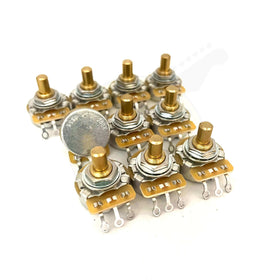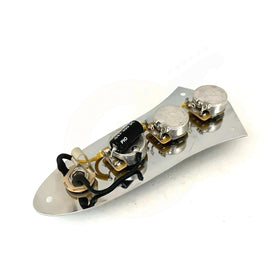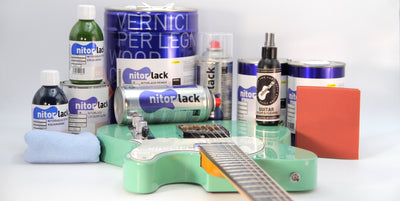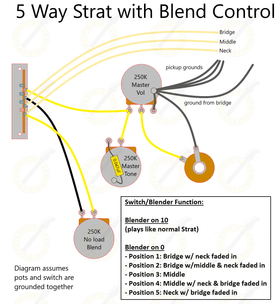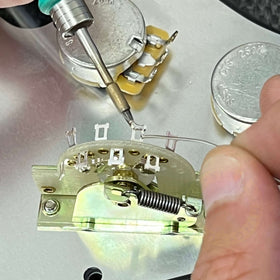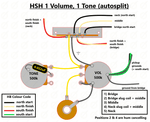
One downfall of many guitar wiring circuits is the loss of high end frequencies when the volume control is rolled down, resulting in a dark, muddy sound. It effectively makes the volume control a little redundant when it is lowered below 6. Adding a treble bypass (aka treble bleed into your circuit counter-acts this and provides a more rounded sound when the guitar is set at a low volume. It retains the high end frequencies and allows the guitarist to lower the volume further whilst retaining clarity. A treble bleed typically consists of a resistor paired with a low value capacitor and it actually acts as a treble by-pass. The treble (or high end) bypasses the load of the pot by jumping across from the pots input to the output, therefore avoiding the pot's load on the signal.
Treble bypass capacitors will vary in capacitor and resistor value but a good all-rounder is a 150k resistor soldered in parallel with a 0.001uf capacitor, They are connected to the input and output lugs of the volume pot as per the above wiring diagram.
Read our guide on installing a treble bleed circuit into your guitar.


